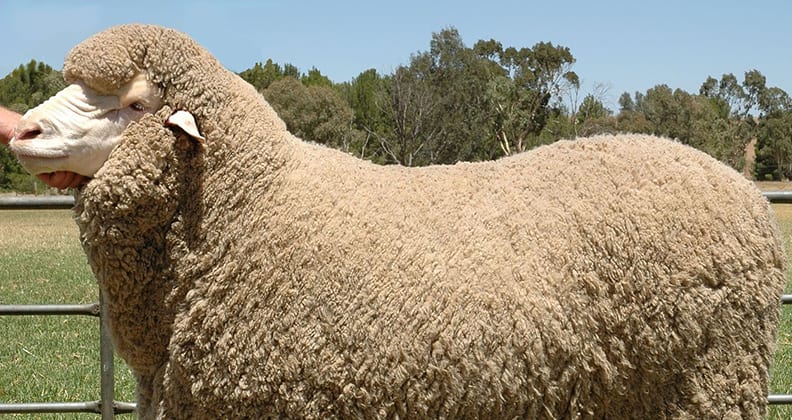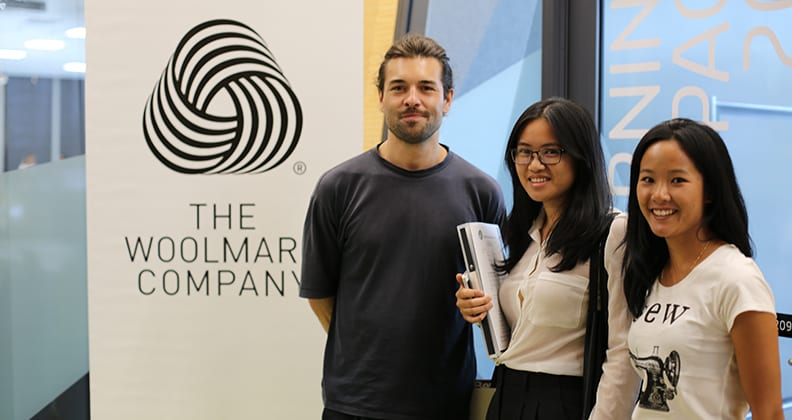Curtin fashion students got a glimpse of what it’s really like to work in the glamorous yet cutthroat world of fashion and design when global authority on Merino wool, The Woolmark Company, hosted a seminar at the Curtin Medical School in March.
The Naturally Inspiring seminar was part of the University’s Work Integrated Learning focus to provide students with the opportunity to learn from and network with national industry representatives.
Curtin Fashion Coordinator Dr Anne Farren says it’s just as important for students to have strong support networks, mentors and contacts throughout the fashion field as it is to have solid design skills.
“Industry connections are essential,” says Dr Farren. “Our staff work extremely hard to maintain existing links and establish new links that will facilitate opportunities for our fashion students.”
The Woolmark Company represents one of world’s best-known textile fibre brands, and its iconic logo has adorned more than five billion wool products since 1964. The company has strong engagement with Curtin’s fashion department, and presented the seminar in association with a third-year fashion unit, Fit, Form and Function, which emphasizes the application of wool cloth.

“Consumers, and in many cases designers, still think of wool as primarily a source of yarns for knitting jumpers. However, for many years there has been an amazing range of wool fabrics available with new developments in the growth of the fibre,” says Dr Farren. “Wool garments have the potential to be positioned as a quality product that will have a longer life than the cheap fast fashion alternatives that generate huge waste.”
Woolmark representative Natalie Skubel spoke to students about the importance of textile choice, and the advantages of working with a natural and sustainable fibre like Merino.
“Textile selection is as important as design and construction,” says Skubel. “It can help define your brand.” (Think Burberry’s checkered pattern and Chanel’s tweed.) “Merino wool fibres are extremely fine, enabling them to bend far more than traditional, coarser wool fibres. This makes Merino wool feel soft and luxuriously gentle next to your skin.”
Australian designer Lukas Vincent was at the seminar to speak to students about his experiences of working with wool for his designer label, Ex Infinitas, and to also shed light on life as an up-and-coming designer. Vincent has worked globally as a fashion consultant and designer for renowned brands in Australia, New York and Paris, and was a finalist in the 2016/2017 International Woolmark Prize.
The coveted award celebrates outstanding fashion talents from around the world who showcase the possibilities and design excellence of Merino wool. The event was held at the Palias de Tokyo, Paris, and past winners include Karl Lagerfield and Yves Saint Laurent.
Vincent showcased his Ex Infinitas collection at the event, which combines 1970s surf culture with minimalist modern punk and an emphasis on strong tailoring.
“I was inspired to fuse surf sensibility with a more aesthetic appeal,” says the Melbourne-base designer on his collection. (More sartorially inclined surfers can enjoy an Ex Infinitas wool sweater that is finer than cashmere.)
Vincent has signed deals with stores around the globe, and his designs can be found in outlets in Canada, Paris, South Korea and the US. But he was upfront with students about the difficulties of being an independent designer and the sacrifices he has made. He revealed he often survives on just a few hours’ sleep a night and many of his creations began in the spare room of his mother’s house, but his presence at the seminar was a highlight for many students.
“Having a conversation with Lukas Vincent definitely gave me valuable insight into the fashion industry,” says third year fashion student Melissa Goh.

Goh is currently working on releasing her own label, Pei-Sun. While Skubel reminded students it can be challenging to be a designer in one the world’s most isolated cities, Goh remains positive about her future in fashion.
“Living in such an isolated city used to concern me a lot, but I’ve worked in the industry for more than five years now with some of Australia’s highly reputable fashion designers, and I think having an online platform or social media presence makes it possible for us in Perth to connect anywhere.”
Curtin fashion students and alumni will be presenting their innovative wool designs at the Claremont Quarter in April.



